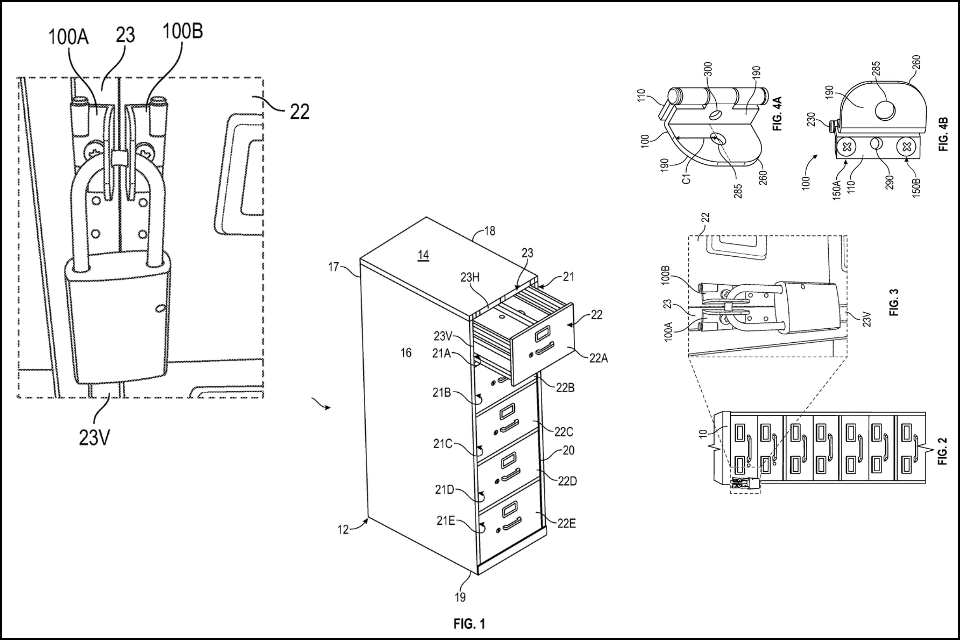The D-Hasp: Brandeis Innovation Outfoxes Lock Breakers with Clever New Security Design

A Brandeis University inventor has created a tamper-resistant security device that makes breaking into cabinets much harder—and it's all about how the pieces fit together.
Most security hardware is an afterthought until something gets stolen. But for Donald Hodge, a locksmith who worked here at Brandeis University in the Facilities department, the humble hasp presented an irresistible engineering challenge that combined his Brandeisian innovative spirit with real-world security expertise.
The result is the D-Hasp, a tamper-resistant security device that recently earned patent protection, earning US Patent No.12264519B2. Hodge's locksmith expertise shows in this design: unlike traditional hasps that can be pried open with basic tools, his innovation makes unauthorized access significantly harder through a dual-component system.
The Dual-Pivot Design
The D-Hasp consists of two pivotable components that must align perfectly before a padlock can be inserted. Think of it as a mechanical puzzle that only opens when positioned correctly.
When installed, the shackle aperture—where your padlock goes—only becomes accessible when both parts pivot into position. In addition, a separate overlay blocks access to the mounting screws, creating true tamper resistance. Most conventional hasps are vulnerable. Intruders can pry open mounting points, attack hinges, or cut through metal. As a locksmith, Hodge understood these vulnerabilities intimately. The D-Hasp addresses these weaknesses by making mounting hardware inaccessible and creating multiple resistance points:
- The two-hinge design means both components must be compromised simultaneously—much harder for thieves.
- When the hinges pivot together, a security hole aligns with the mounting component.
- A screw through both holes makes the mounting screws completely inaccessible
This series of features means even if someone tries to remove the entire hasp, they can't reach the screws when it's locked.
Despite advanced security features, installation remains simple with just basic self-tapping screws on horizontal and vertical lips. The compact design fits ultra-narrow frames and works for medical storage, filing cabinets, retail displays, and cash boxes.
From the Workbench to Market
The D-Hasp represents the perfect marriage of innovation and practical trade expertise. Hodge's background as both a Brandeis staff inventor and working locksmith gave him unique insight into security vulnerabilities that purely academic or purely commercial approaches might miss. The device's elegance lies in its simplicity. It solves security problems not through complexity, but through clever mechanical design that makes tampering too much trouble.
As the D-Hasp moves toward commercialization, it represents thoughtful engineering that makes everyday security better. Sometimes the most elegant innovations make you wonder why nobody thought of them before. And the D-Hasp might just be one of those inventions that seems so obviously right, you can't imagine security hardware working any other way.
Brandeis University's Office of Technology Licensing has nearly 300 active patents, and this adds to our portfolio with applications across multiple industries. Donald’s invention shows that the Brandesian spirit of invention goes well beyond the labs, with staff members across the community often coming up with innovative ideas based on their real-world experiences. Brandeisians continue to prove that innovation knows no boundaries on our campus.